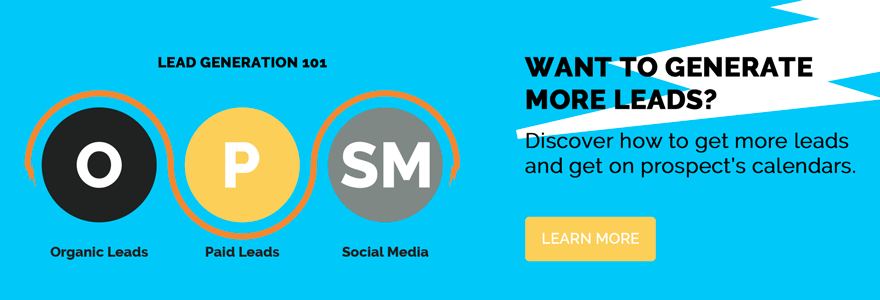Multi-Location SEO in 5 Easy + Effective Steps
Multi-location SEO is the perfect way to attract buyers who have an immediate need and who are looking for the best local company to help them. And, all you have to do to capitalize on these opportunities is to make sure you waltz into their search results. Read on to know how you can optimize your local SEO campaign to fulfill all your needs.
About 46% of searches on Google are local. This means that if you don’t have an SEO strategy in place that caters to your local market, you can miss out on a lot of traffic and sales opportunities. How great would it be if you can avoid that with just a few simple changes to your website? Scratch that. How great would it be if you generated quality leads through a few simple steps? The following process can help you achieve exactly this.
- Have a separate page for every location
- Optimize each of the pages for SEO
- Optimize content for every location
- Set up a Google My Business profile for each location
- Get reviews for each location
If you’ve just started practicing Local SEO for multiple locations, here are 6 ways to enhance your practices.
Have a separate page for every location
Most websites tend to have every location’s information on one page. That is not ideal. Each page of your website should be only about one thing. Dedicated pages rank higher. Don’t hesitate in adding individual pages. If every page you add has relevant and necessary information, the pages will only add value.
One of the ways to achieve higher ranking is to have a structured set of URLs. It organizes your site, enhances user experience, and since the content doesn’t overlap, it ranks higher. However, the content has to be very distinctive across pages. It has to be about 80% unique on each page. Only changing the location and some other minor details will not make much of a difference. An example of a structured set of URLs could be:
- www.yourwebsite.com/locations
- www.yourwebsite.com/locations/toronto
- www.yourwebsite.com/locations/new-york
- www.yourwebsite.com/locations/calgary
- www.yourwebsite.com/locations/san-diego
The URL must be geo-specific for each page. This allows Google and other search engines to better index your pages for local search.
Optimize each of the pages for SEO
Once the pages for each of your business locations are created, you must optimize them for Google to understand what the page is about. This means that you have to make it extremely readable by Google so it ranks higher. For this, you must start by finding a tool that works best for you. Tools like Yoast Or SEMRush are examples. After which you can work on the 7 things listed below:
- Focus Keyword or Phrase - Each page of your website needs to be dedicated to one topic only. In this case, it would be each individual location. This page should be unique and talk about the Focus Keyword for that page. For example, if it is about your Toronto location, the details of that location is all the page should focus on.
- Titles - Your pages and blogs have two different types of titles - The H1 Header and the Page Title. The H1 Header is the title at the top of your page that determines what the page is about. In the case of a blog, it is the main title of your blog. The Page Title is what shows at the top bar of your browser. This is also called the title tag.
- Meta Descriptions - These are all the small pieces of information that appear below your Page Title and URL in a search result. They further help the search engine understand what your page is about.
- Optimize Your Images for SEO - Every image you use on your page needs to mean something to the search engine. Being cognizant of the image size, image tags, descriptions, etc., aids in lowering the load time of your page. It also makes sure that Google in a way sees the image or better yet, links it to the content on your page.
- Internal Links - This simply means that all your relevant pages must be linked internally. If you’re talking about Location A in New York, you can have a link to the product/services page that the New York location provides. It is important to make it clear to the search engine exactly how your pages are linked to each other.
- Link Building - This is a great way to build credibility not just in the eyes of your audience, but also, your search engine. This refers to all the external pages that talk about your page and add links to it on their own pages. Sure, this can be done through social media but there are other ways like press releases, guest blogging, and submitting your content to other established and local directories that might share your content and link back to it.
- Page Speed - This refers to the pace at which your page loads. Several aspects of your page might affect your page’s load time on a mobile device. There are tools available that let you test it. The lower the load time, the easier it is to keep users interested.
Read on for more details on these 7 Basic SEO Steps that help you to rank higher.
Optimize content for every location
A user lands on your page with the intention to know more. They want to know if the solution they’re looking for can be solved by you. The information to every location page cannot be limited to contact information and address. Apply a local business schema to make sure that location-specific information like business hours, location manager’s information, etc., pop up for the user to make a more informed decision.
Some other information you can add can be:
- Reviews and Testimonials
- Directions
- Photos (360 Degree view of the building)
- Service / Product Offerings
- Incentives and Offers
Set up a Google My Business (GMB) profile for each location
Create a separate Google listing for each of your locations. Then add the web page URL of each of these locations to your GMB profile. Google has a guide of its own to help you rank high through listings. Once you claim and optimize your profile for each location, you can take control of your rank. You can add several locations to one account and for all of these, you can do a bulk upload of information through a Google spreadsheet tool. This means your business will also be easily discoverable on Google Maps which is a solid plus.
Maintaining name and category consistencies is important along with adding relevant photos, accurate hours, getting and responding to reviews. This adds significant credibility to your business.
Tip: Along with this make sure to have your business listed on other directories, especially the top local ones. These directories can be aggregators for your business. This also includes directories like Yellow Pages, Foursquare, Yelp, etc. The one thing to keep in mind is the consistency across these. The business’ NAP i.e Name, Address, Phone number should be the same throughout. Citation inconsistencies make Google disregard your information and make them discrepant in terms of information. This lowers your rank.
Get reviews for each location
Statistically, over 85% of people trust Google Reviews blindly. They trust it as much as recommendations through friends or family. About 50% of people need a 4 star+ review to engage with a business. This does not mean that you should delete any negative review you received and showcase only the good ones. What’s important is that the business responds to these reviews and offers an apology or compensation for a bad experience and acknowledge people that leave a good review. This adds a layer of humanity to the business making it seem more approachable. It is indeed true that reviews make or break the decision of a potential customer to engage with your company.
The aforementioned steps can take your business to newer heights when it comes to location SEO. Multi-location SEO is a highly imperative practice when you’re looking at gaining local vantage and additional brownie points from search engines. It’s also a great tactic for inbound marketing. We know the ‘dos and donts’ of inbound marketing and can provide the services that your multi-location business needs.
Table of contents
Share this
You May Also Like
These Related Stories

6 Ways to Improve Your Local SEO

Your Guide to Local SEO


